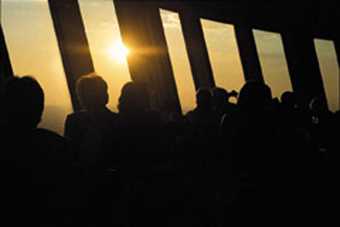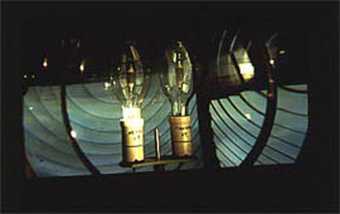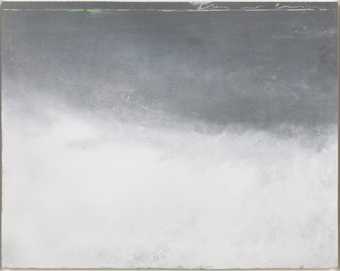
Tacita Dean Fernsehturm 2001
Tacita Dean trained as a painter and now works in a variety of media, including drawing, photography and sound but is best known for her compelling 16mm films, of which she has made fifteen to date. Static camera positions and long takes are characteristic of her films, creating a sense of stillness in their moving images. She has also made works about the mechanics of production, which reveal the artifice of cinema.
Dean's work seeks connections between past and present, fact and fiction. She maps not just the objective world but also our private worlds and traces the complex interaction between the two. The depiction of different locations is matched by dislocations in space and time: real landscapes are layered with inner, psychic landscapes defined by our own desires and obsessions. The relic, removed from its original context, is central to her more recent films. In works such as Bubble House (1999) and Sound Mirrors (1999), we are shown buildings and places that are charged with a meaning that we cannot fully comprehend, often depicting a failed or abandoned vision.

Tacita Dean Disappearance at Sea
Dean has always been fascinated by the sea, its meanings and associations. The sea as interpreted in her work can be traced back to eighteenth-century notions of the sublime, where elemental forces were viewed as emblems of turbulent and ungovernable human emotions. She has been particularly moved by the tragic account of Donald Crowhurst's attempt to fake a solo voyage around the globe and his eventual loss of sanity and life to the sea. Her films often feature water under different conditions, most frequently in images of the coast where land meets the sea and the sea mirrors the sky. Lighthouses appear in several works as either the central motif, as in Disappearance at Sea (1996), or as important details in works such as Banewl (1999). Throughout history these buildings have fulfilled a complex role. As landmarks they have enabled mariners to establish precise locations offshore, to calculate distance, speed and course. They have also fulfilled a symbolic purpose as a form of guidance. In Dean's films such isolated human structures, enveloped by unfathomable natural immensity, are transformed to become metaphors for the human condition, silent witnesses to tragedy and loss, as much as to rescue and redemption.
Throughout her career, Dean has placed great importance on the written and spoken word. This is reflected in the narrative content of earlier works and her own, extensive writings. In acknowledgement of this, Tacita Dean has written a series of short texts on each of the works included in this exhibition.

